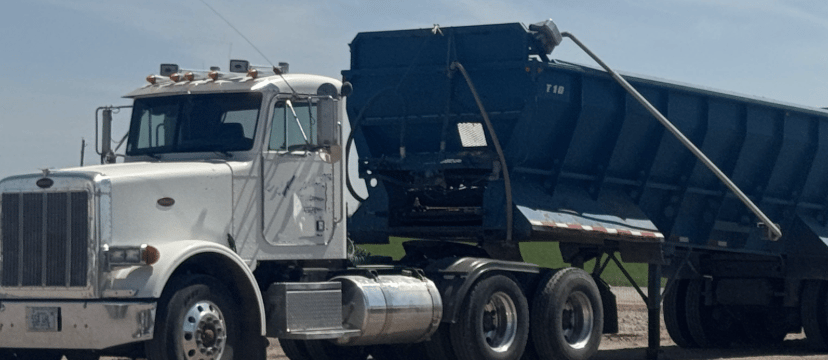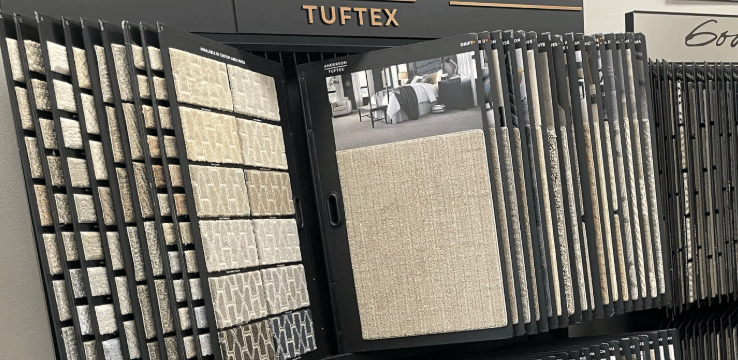⚡ TL;DR:
New SBA rule: Seller notes for equity need 10-year standby (was 2)
The hack: Use 2 notes—only equity note needs full standby, saving $100K+ in cash
Key insight: "Seller financing is a dial that moves purchase price"—use it to your advantage
This week: Wheel dist ($1.5M CF), construction ($1.2M CF), HVAC ($718K CF), flooring ($333K CF)
Pro: see all deals from 150+ sites in one spreadsheet ($39/mo)
The Post-June 2025 Guide to SBA Seller Financing: What Actually Works Now

Discover why seller financing is the hidden lever that makes or breaks SBA acquisitions—and how to use it to your advantage.
The New SBA Reality
The SBA's Standard Operating Procedure (SOP) 50 10 8, effective June 1, 2025, fundamentally changed the seller financing landscape. Under the revised SOP, a seller note must be on full standby—with no principal or interest payments—for the entire SBA loan term (typically 10 years) to count toward the required equity injection.
This is a dramatic shift from the previous 24-month standby period. But here's the critical nuance: this full-term standby requirement only applies when the seller note is being used to meet the buyer's equity injection requirement.
When multiple seller notes exist, only the one being used for equity injection must be on full standby for the life of the loan. This creates strategic opportunities for sophisticated buyers who understand the distinction.
The 10% Down Payment Reality
SBA loans require a minimum 10% equity injection from the buyer for business acquisitions. Under the new rules, a seller note may only count toward this requirement if it's on full standby for the life of the SBA loan and represents no more than 50% of the total equity injection (5% of the 10% minimum).
Consider the new typical structure:
SBA loan: 80-85% of purchase price
Buyer cash down payment: 5% minimum
Seller note (for equity): 5% maximum (on full standby for loan term)
Additional seller note (not for equity): 5-10% (more flexible terms)
This layered approach allows buyers to minimize cash requirements while providing sellers with better overall terms on the portion not subject to full standby.
A Real-World Example
Let's walk through a $2 million business acquisition with a single seller note:
Purchase Structure:
Purchase Price: $2,000,000
SBA Loan (85%): $1,700,000
Buyer Cash (10%): $200,000
Seller Note (5%): $100,000
Monthly Cash Flow Impact:
SBA Loan: ~$20,200/month (10 years at 10.5%)
Seller Note: $0/month for 2 years, then ~$1,850/month (years 3-10 at 7%)
Total Monthly Debt Service:
Years 1-2: $20,200
Years 3-10: $22,050
This traditional structure requires $200,000 in buyer cash but keeps debt service manageable throughout the loan term.
Interest Rate Reality Check
Current SBA rates hover around 10-11%, yet seller notes show remarkable variation. Market data shows rates ranging from 0% to 15%, with most falling between 6-8%.
"There is no normal. In our experience, there are different rationales for interest rates. If the seller note is to help pay a higher price, the interest rate could be a little less. If the sales price is lower than the seller would like, maybe they'd want a little higher interest rate. If the business is fairly priced, then the market interest rate may prevail."
This insight reveals that seller note pricing reflects the total value equation, not just market rates. Factors include term length, collateral position, personal guarantees, and cash flow coverage.
The Subordination Strategy
Every seller note in an SBA deal must be subordinated to the SBA loan—non-negotiable. But sophisticated buyers turn this constraint into an advantage by structuring multiple notes with different purposes.
The key insight: only the note used for equity injection faces the harsh full-term standby requirement. Additional seller financing can be structured with more favorable terms, including:
Shorter standby periods (potentially just 2 years)
Current interest payments after the standby
Earlier maturity dates
Standard amortization schedules
Advanced Structuring Techniques
The Two-Note Strategy
By splitting seller financing into two separate notes—one for equity injection and one as additional financing—buyers can cut their cash requirements in half while sellers receive payments years sooner.
Same $2 Million Acquisition, Optimized Structure:
Purchase Price: $2,000,000
SBA Loan (80%): $1,600,000
Buyer Cash (5%): $100,000
Seller Note #1 for Equity (5%): $100,000 (full standby for 10 years)
Seller Note #2 Additional (10%): $200,000 (2-year standby only)
Monthly Cash Flow Comparison:
SBA Loan: ~$19,000/month (10 years at 10.5%)
Seller Note #1: $0/month for entire term
Seller Note #2: $0/month for 2 years, then ~$3,700/month (years 3-5 at 7%)
Total Monthly Debt Service:
Years 1-2: $19,000 (vs. $20,200 single note)
Years 3-5: $22,700 (vs. $22,050 single note)
Years 6-10: $19,000 (vs. $22,050 single note)
Key Benefits:
Buyer saves $100,000 in upfront cash (50% reduction)
Seller receives $200,000 starting year 3 instead of waiting 10 years
Lower debt service in years 6-10 improves exit flexibility
Important Compliance Note
SBA regulations generally prohibit earnouts and contingent pricing in 7(a) loan transactions. While some buyers attempt workarounds, these strategies often fail compliance review. Any performance-based provisions must be structured entirely outside the acquisition and approved by your lender. Always consult with an experienced SBA attorney before attempting creative structures.
The Partial Buyout Challenge
The new SOP effectively eliminated most partial change of ownership structures. Any seller who retains equity post-close must provide a full personal guarantee for at least two years. Additionally, any person gaining ownership must be a co-borrower.
This makes rollover equity and retained ownership structures far less attractive for both buyers and sellers.
The Operational Advantage
For the portion of seller financing not on full standby, the traditional benefits remain:
Years 1-2: Non-equity seller notes with 2-year standby provide crucial cash flow flexibility during transition.
Years 3-5: As payments begin on non-equity notes, the stabilized business can manage the additional debt service.
Years 6-10: Only the smaller equity-injection note remains on standby, minimizing long-term cash flow impact.
Negotiation Psychology
"This is a dial that offsets price. The higher the price, the longer the seller note amortization and lower the interest rate."
The new rules add complexity but create opportunities. Sellers who understand the distinction between equity and non-equity notes can structure deals that work for both parties.
The key is education—most sellers don't realize they can receive payments much sooner on portions of their financing.
Market Intelligence
The new SOP has created a bifurcated market:
Sophisticated deals use multiple notes to optimize cash flow and minimize standby requirements.
Simple deals rely on single notes with full standby, limiting seller flexibility.
These changes reward buyers who understand the nuances and can explain them clearly to sellers.
Implementation Framework
Success under the new rules requires careful planning:
Structure Early: Determine seller financing allocation between equity injection and additional financing
Document Properly: Use SBA Form 155 or lender-approved equivalents
Educate Sellers: Explain the two-note structure benefits clearly
Verify Compliance: Confirm all structures with your SBA lender before proceeding
Model Cash Flow: Calculate payment impacts across different scenarios
Your Competitive Edge
The new SBA rules haven't killed seller financing—they've made it more complex and created advantages for sophisticated buyers. Understanding the distinction between equity-injection notes and additional seller financing is now critical.
Master these dynamics: minimize cash requirements with a 5% down payment plus 5% seller note for equity, then negotiate additional seller financing with more favorable terms. Sellers who grasp this structure will close more deals at better prices.
The difference between good and great buyers isn't access to capital—it's the sophistication to navigate the new rules while creating win-win structures. In the post-June 2025 SBA world, knowledge of these distinctions is your greatest asset.
For the most current SBA guidelines, consult the SBA SOP 50 10 8 and work with an experienced SBA lender and attorney.
Newly Listed Deals

Wheel Distribution Business
Los Angeles-based wheel distributor established 2008, representing powerhouse in performance wheel industry with 25+ years expertise. Listed at 4.2x cash flow with $1.5M cash flow on $7.3M revenue, operates from two Kansas City/LA locations with vertical integration capabilities and strategic manufacturing partnerships.
📍 Location: Los Angeles County, CA
💰 Asking Price: $6.1M
💼 Cash Flow: $1.5M
📊 Revenue: $7.3M
🧮 Estimated DSCR: 1.64x
💵 Estimated Cash Flow After Debt Service: $566K
ℹ️ Source: BusinessBroker.net
⏰ Listed: Recently
Business Highlights
19,000 SF facility in Midwest with expansion capacity
30,000+ wheels annually through strategic partnerships
Drag racing specialty targeting high-end applications
Proprietary technologies including one-piece construction
Company 2 manufacturing through merged entity structure
Construction & Agricultural Services Company
Arizona trucking business operating since 1986 with diverse revenue streams across construction cleanup, farm waste hauling, fertilizer distribution, and rodeo arena preparation. Listed at 4.1x cash flow with $1.2M discretionary earnings on $8.4M revenue, includes fleet of heavy-duty trucks and specialized equipment.
📍 Location: Arizona
💰 Asking Price: $4.9M
💼 Cash Flow: $1.2M
📊 Revenue: $8.4M
🧮 Estimated DSCR: 1.68x
💵 Estimated Cash Flow After Debt Service: $484K
ℹ️ Source: Transworld Business Advisors
⏰ Listed: 2 Days Ago
Business Highlights
24.51 acres real estate must be purchased separately
Long-term relationships with major contractors
Turnkey operation with systems and contracts in place
Adjacent service areas for regional expansion potential
35 employees including experienced crew leaders
Commercial HVAC & Refrigeration Business
Utah HVAC contractor established 2020 with strong recurring revenue from retail chains, restaurants, and commercial properties. Listed at 4.6x cash flow with $718K discretionary earnings on $2.6M revenue, includes $350K in equipment/inventory and operates in fast-growing Mountain West region.
📍 Location: Washington County, UT
💰 Asking Price: $3.3M
💼 Cash Flow: $718K
📊 Revenue: $2.6M
🧮 Estimated DSCR: 1.49x
💵 Estimated Cash Flow After Debt Service: $236K
ℹ️ Source: Transworld Business Advisors
⏰ Listed: 3 Days Ago
Business Highlights
Zero advertising spend all revenue from repeat clients/referrals
10 employees with experienced crew already in place
High-demand market limited competition in region
$2,200 monthly rent low overhead for commercial operation
Owner retiring after building successful 4-year operation
Custom Carpet & Flooring Business
Florida contractor specializing in luxury carpet and area rug fabrication since the 1980s, serving high-end residential, yacht, and commercial markets. Listed at 3.0x cash flow with $333K discretionary earnings on $1.35M revenue, includes 5,000 SF workroom and 1,200 SF fabrication facility.
📍 Location: Broward County, FL
💰 Asking Price: $1M
💼 Cash Flow: $333K
📊 Revenue: $1.35M
🧮 Estimated DSCR: 1.82x
💵 Estimated Cash Flow After Debt Service: $150K
ℹ️ Source: BizMLS
⏰ Listed: 4 Days Ago
Business Highlights
Interior designer network with emphasis on repeat business
Skilled team of employees and subcontractors
Full-service offerings from staircase carpeting to restoration
State-of-the-art facility for efficient production
Complex custom projects capability setting apart from competition
Note: DSCR calculations assume 10.50% SBA 7(a) rate, 10% down payment, 10-year term
⏱️ Stop wasting 10+ hours weekly searching multiple deal sites.
Every business for sale, one daily-updated spreadsheet. See all deals from 150+ deal and broker websites.
Never miss a deal: All listings aggregated daily
Analyze faster: Compare financials in seconds
Filter instantly: By industry, location, revenue, price
Share with your team: One-click collaboration
First to know: New opportunities highlighted daily
Get EBIT Pro for $39/mo and focus on evaluating deals, not finding them.
Disclaimer: Educational content only - not investment advice. Listings from third-party sources, accuracy not guaranteed. Do your own due diligence. Consult professionals before making decisions.





